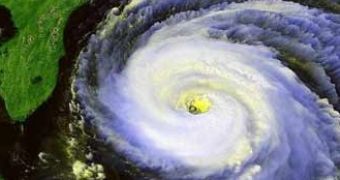Google has announced that users interested in the latest series of events related to Hurricane Gustav can now search for them on Google Earth. The application delivers, under the Weather tab, the latest information on the hurricane. The natural phenomenon was granted a special place in Google's application on account of its magnitude. Many fear that Gustav would incur the same damage as Katrina did three years ago.
Now, users can see the clouds moving across the affected regions and they can also see the places that the hurricane is about to strike next. However, Google recommends that people should only rely on official information, as the satellite imagery employed by the application doesn't offer a real-time picture of the natural phenomenon. “Please keep in mind when tracking the storm in Google Earth that the 'Clouds' layer is 1-3 hours behind 'real time,' so the storm is actually farther ahead than it looks. The 'Radar' layer should be accurate within 15-30 minutes of real-time.” says Cris Castello, working for the Google Earth Team, on the official blog.
Users who want to have a clear-cut look at the storm are advised to download a safe KML (Keyhole Markup Language) application from the blog. The application enables a set of features, ranging from placemarks, images, and 3D models, to latitude and longitude details of the region that was chosen to be analyzed. Also, in case of a dynamic phenomenon, such as a hurricane, KML displays the inclination angle of the storm cone, the altitude, and the forecast route.
The Google Earth tool must be regarded as a fun tool (although a hurricane is anything but funny) and not as an established weather forecaster. The company implemented it in order to offer imagery of one of the most impressive natural phenomena, but the application is rather intended to be employed by people around the world, instead of by those directly affected. “If you happen to be in one of the affected areas, please stay tuned to your local authorities for specific instructions.” Castello adds.

 14 DAY TRIAL //
14 DAY TRIAL //